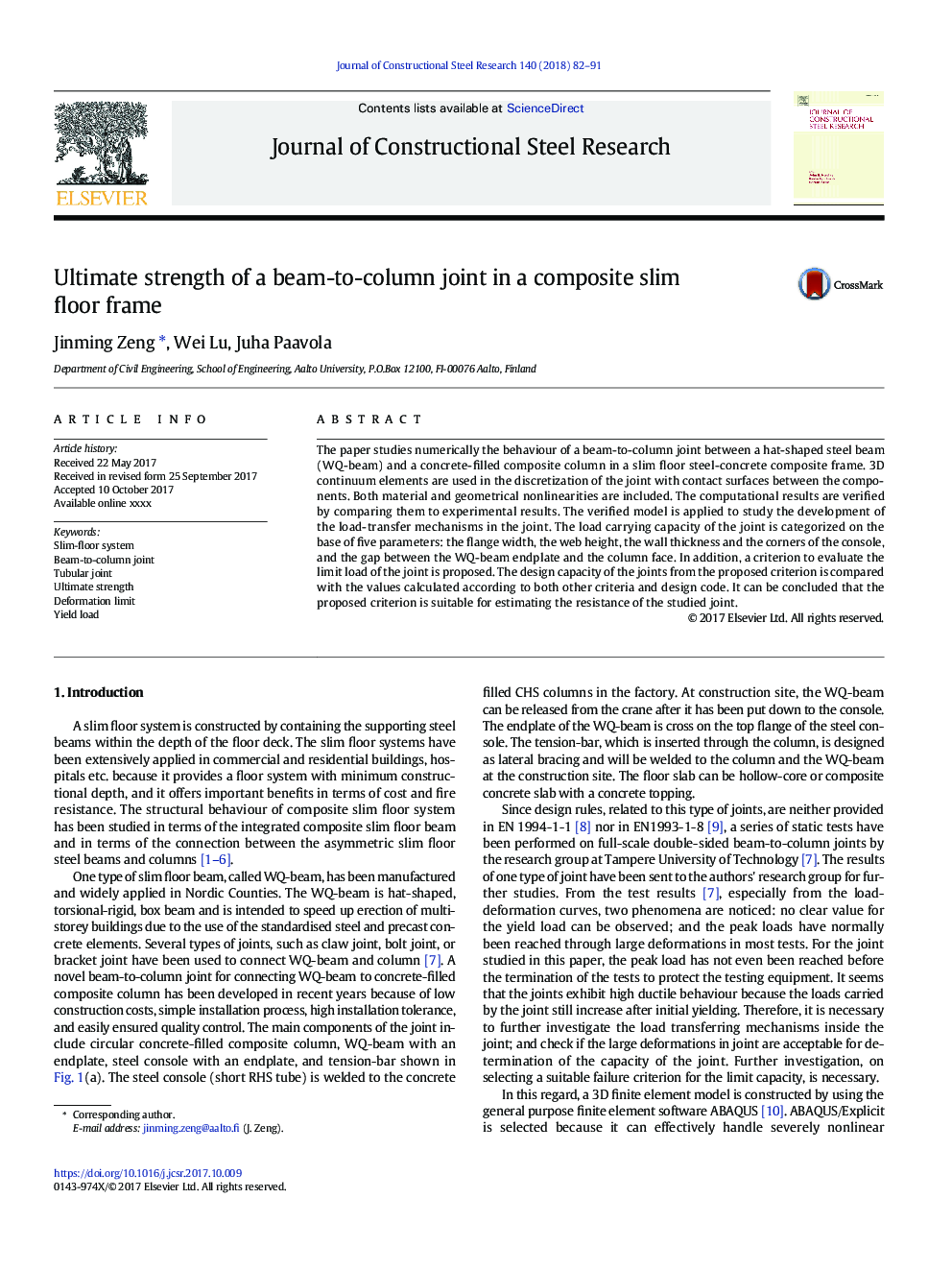| Article ID | Journal | Published Year | Pages | File Type |
|---|---|---|---|---|
| 6751225 | Journal of Constructional Steel Research | 2018 | 10 Pages |
Abstract
The paper studies numerically the behaviour of a beam-to-column joint between a hat-shaped steel beam (WQ-beam) and a concrete-filled composite column in a slim floor steel-concrete composite frame. 3D continuum elements are used in the discretization of the joint with contact surfaces between the components. Both material and geometrical nonlinearities are included. The computational results are verified by comparing them to experimental results. The verified model is applied to study the development of the load-transfer mechanisms in the joint. The load carrying capacity of the joint is categorized on the base of five parameters: the flange width, the web height, the wall thickness and the corners of the console, and the gap between the WQ-beam endplate and the column face. In addition, a criterion to evaluate the limit load of the joint is proposed. The design capacity of the joints from the proposed criterion is compared with the values calculated according to both other criteria and design code. It can be concluded that the proposed criterion is suitable for estimating the resistance of the studied joint.
Related Topics
Physical Sciences and Engineering
Engineering
Civil and Structural Engineering
Authors
Jinming Zeng, Wei Lu, Juha Paavola,
